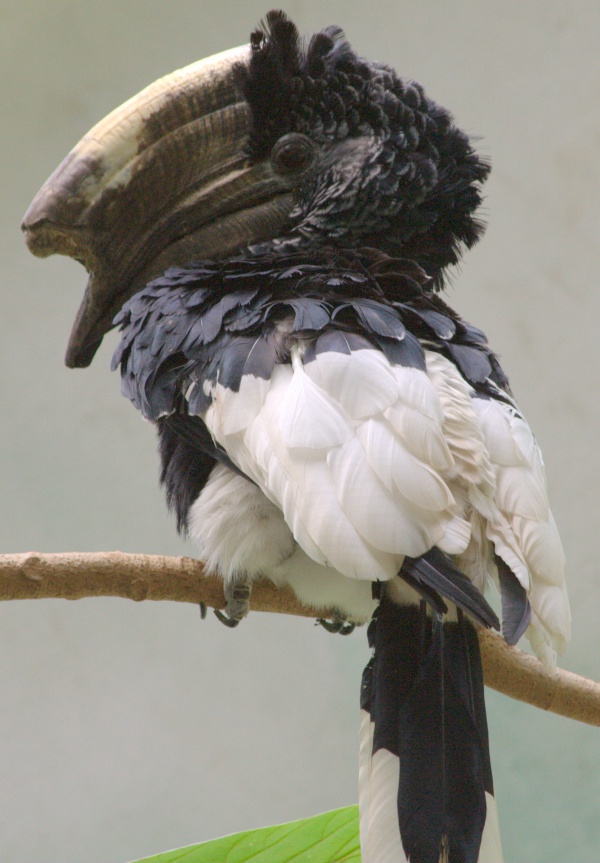Facts About Black-and-white-casqued hornbill
The black-and-white-casqued hornbill, also known as the grey-cheeked hornbill, is a remarkable bird characterized by its distinctive black and white feathers and an oversized bill topped with a substantial casque. The females are slightly smaller than the males and possess a smaller casque. These birds are indigenous to the wooded regions of central and western Africa, ranging from western Kenya to Côte d'Ivoire, with an isolated population in northern Angola. They are monogamous in nature and nest in tree cavities, primarily feeding on figs, fruits, insects, and small animals.
This hornbill belongs to the Bycanistes genus, which comprises six species of sub-Saharan hornbills noted for their black and white plumage and fruit-based diet. It shares habitat similarities with the brown-cheeked hornbill. One of the bird's most distinguishing features is its yellow-brownish bill and the flattened casque, which is more prominent in males and is believed to play a role in sexual selection. The black-and-white-casqued hornbill is also notable for its expressive eyes and head feathers, which it uses to convey emotions.
These hornbills are predominantly found in the Ivory Coast, with smaller populations scattered across West Africa. In Central Africa, they inhabit countries such as Uganda, Kenya, Cameroon, Gabon, Tanzania, and Central African regions. They prefer tropical forests and are rarely seen in flatlands due to their tree-dwelling nature. Their diet is mainly composed of fruits, especially figs, but they are also capable of hunting small animals such as lizards and bird eggs. They obtain most of their hydration from the water content in their fruit diet and are adept at handling food with their beak and esophagus.
Currently, the black-and-white-casqued hornbill is classified as a species of "Least Concern" on the IUCN Red List of Threatened Species, indicating that it is not at immediate risk of population decline.

 Democratic Republic of the Congo
Democratic Republic of the Congo